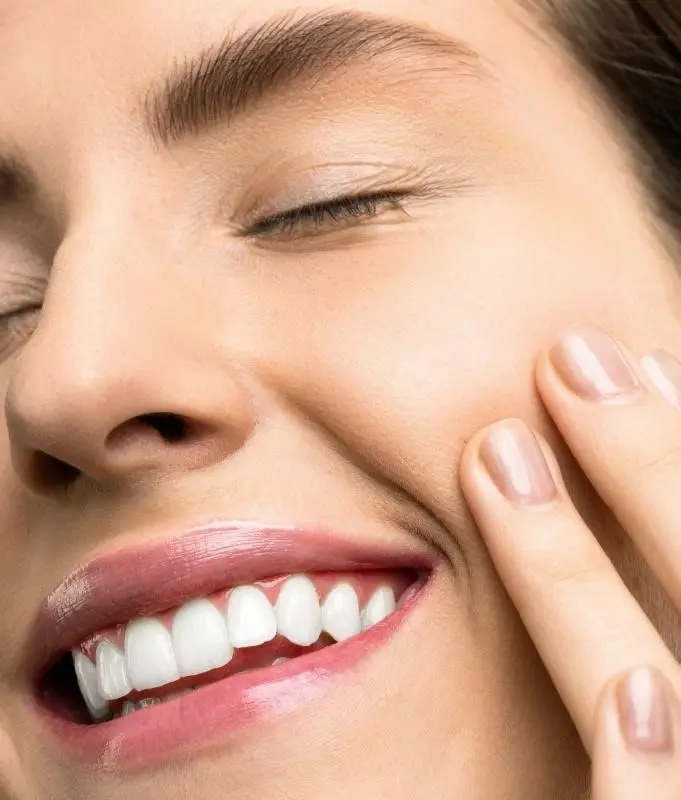While laser gum contouring is generally a safe and minimally invasive procedure, like any medical treatment, it carries some risks. Understanding these potential complications—and how to prevent them—can help ensure a smooth recovery and optimal results.
Common Risks of Gum Contouring
1. Infection
Risk: As with any procedure that involves cutting tissue, there’s a small risk of infection following gum contouring. Bacteria can enter through open gum tissue if the area isn’t kept clean.
How to Avoid:
- Follow your dentist’s post-op instructions carefully.
- Use prescribed antibacterial mouth rinses.
- Avoid touching the treated area with your fingers or unclean objects.
- Maintain oral hygiene without aggressively brushing the healing site.
2. Prolonged Bleeding
Risk: While laser treatments minimize bleeding by cauterizing as they cut, minor bleeding or oozing can still occur, especially in the first 24 hours post-procedure.
How to Avoid:
- Avoid strenuous activities or heavy lifting in the first 24–48 hours.
- Do not consume hot foods or drinks that may aggravate the site.
- Use a soft, cold compress if needed, and avoid spitting or using straws, which can dislodge clots.
3. Gum Sensitivity or Pain
Risk: The gums may feel sore, tender, or sensitive to hot and cold temperatures after the procedure.
How to Avoid:
- Take over-the-counter or prescribed pain relievers as directed.
- Avoid spicy, acidic, or very hot foods until the gums fully heal.
- Use a soft-bristled toothbrush and brush gently around the treated area.
4. Excessive Gum Removal
Risk: Over-contouring can expose too much of the tooth root, leading to tooth sensitivity or aesthetic issues like long-looking teeth.
How to Avoid:
- Choose a skilled and experienced dentist or periodontist with expertise in laser technology.
- Ask for a clear treatment plan and preview (digital or physical) of the expected gum line before the procedure.
- Ensure the gum shaping is conservative and customized to your facial and dental structure.
5. Gum Recession
Risk: If too much tissue is removed or if the procedure is done improperly, gums may recede over time, exposing the tooth roots and increasing the risk of decay or sensitivity.
How to Avoid:
- Ensure the procedure is medically necessary and not overly aggressive.
- Regularly monitor gum health with follow-up dental visits.
- Use desensitizing toothpaste if minor recession occurs, and consult your dentist for further treatment if needed.
6. Relapse or Uneven Gum Line
Risk: In some cases, the gums may regrow unevenly or revert partially to their previous shape, requiring a touch-up procedure.
How to Avoid:
- Follow all aftercare instructions to support proper healing.
- Avoid habits that can irritate healing tissue, such as smoking or excessive alcohol consumption.
- Attend follow-up appointments to track healing and discuss any concerns with your dentist early on.
7. Allergic Reactions or Sensitivity to Anesthetic
Risk: Although rare, some patients may react to local anesthetics or medications used during the procedure.
How to Avoid:
- Inform your dentist of any known allergies or past reactions to medications.
- Review all ingredients and medications in advance of treatment.
General Tips to Minimize Risk and Ensure a Smooth Recovery
- Choose a Qualified Provider: Seek a board-certified dentist or periodontist with specific experience in laser gum procedures.
- Discuss Medical History: Be open about any health conditions, medications, or dental issues during your consultation.
- Practice Excellent Oral Hygiene: Keep the area clean but gentle—no vigorous brushing or flossing until approved.
- Stick to Soft Foods: Eat soft, non-irritating foods during the first few days to prevent trauma to healing gums.
- Attend Follow-Up Appointments: These allow your dentist to monitor healing and address any early signs of complications.
Conclusion
Laser gum contouring is a highly effective and relatively low-risk procedure when performed by an experienced professional. By understanding the potential risks—such as infection, gum recession, or uneven results—and actively taking steps to prevent them, you can ensure a safe experience and enjoy both aesthetic and oral health benefits.




